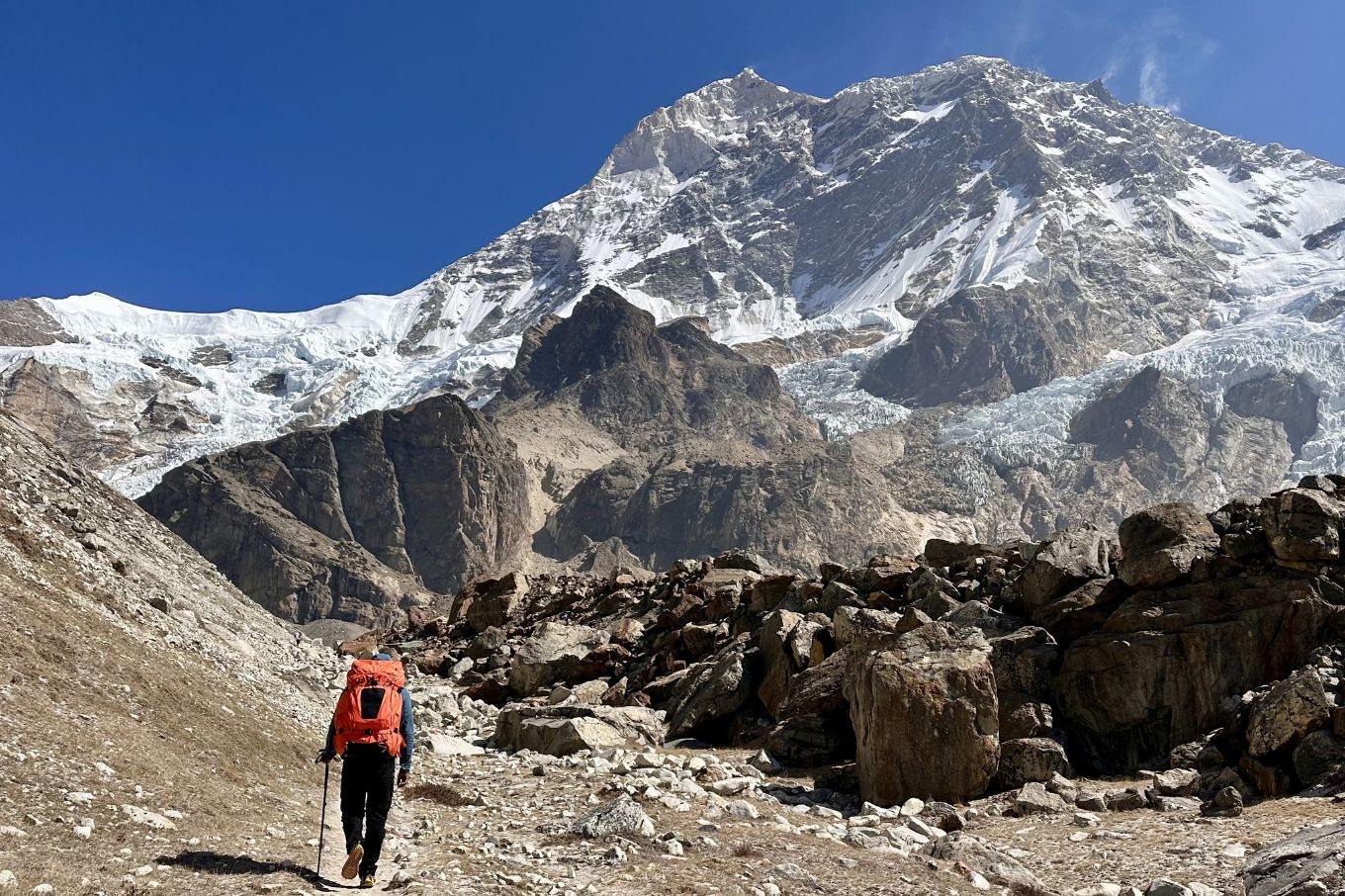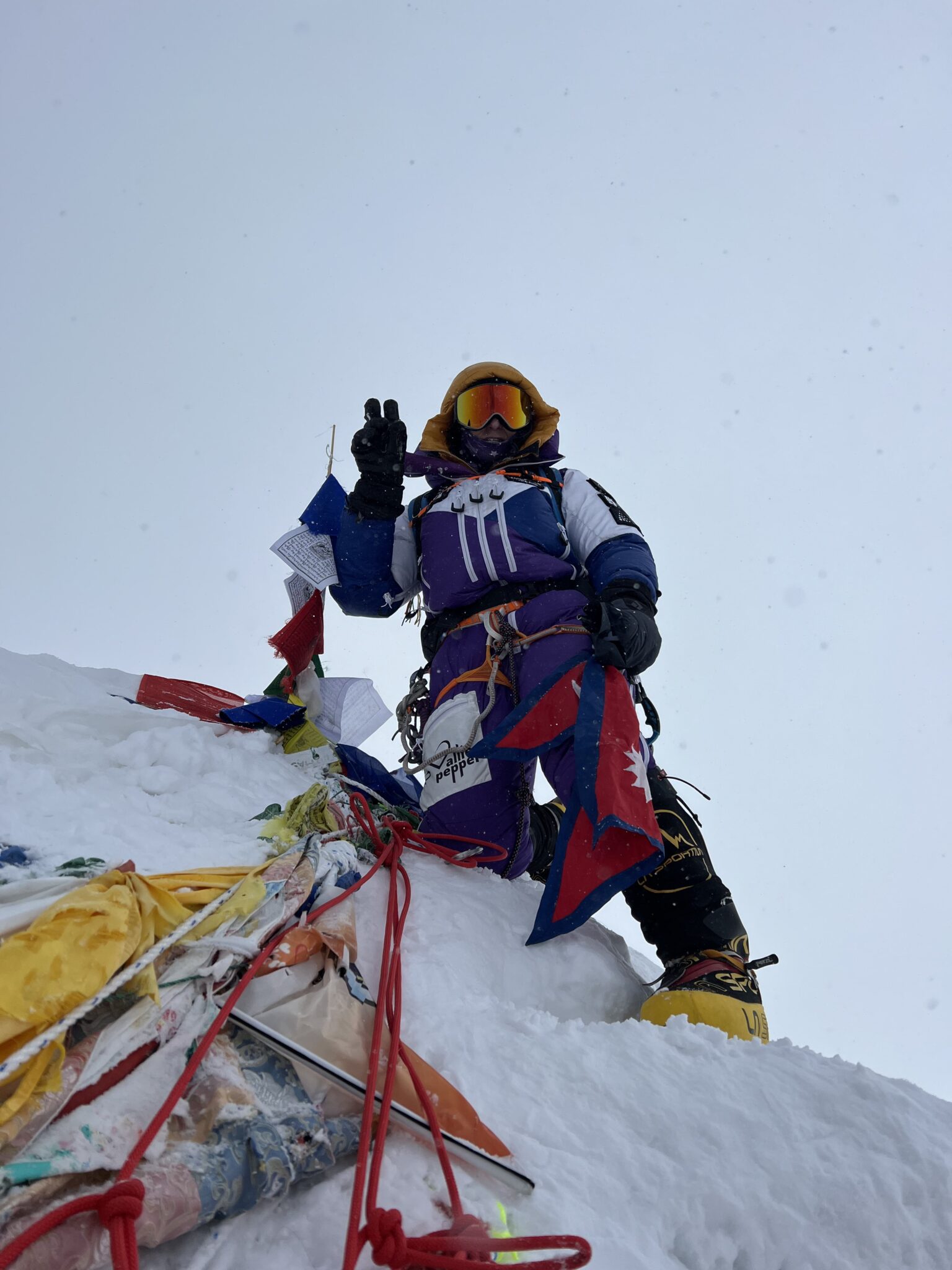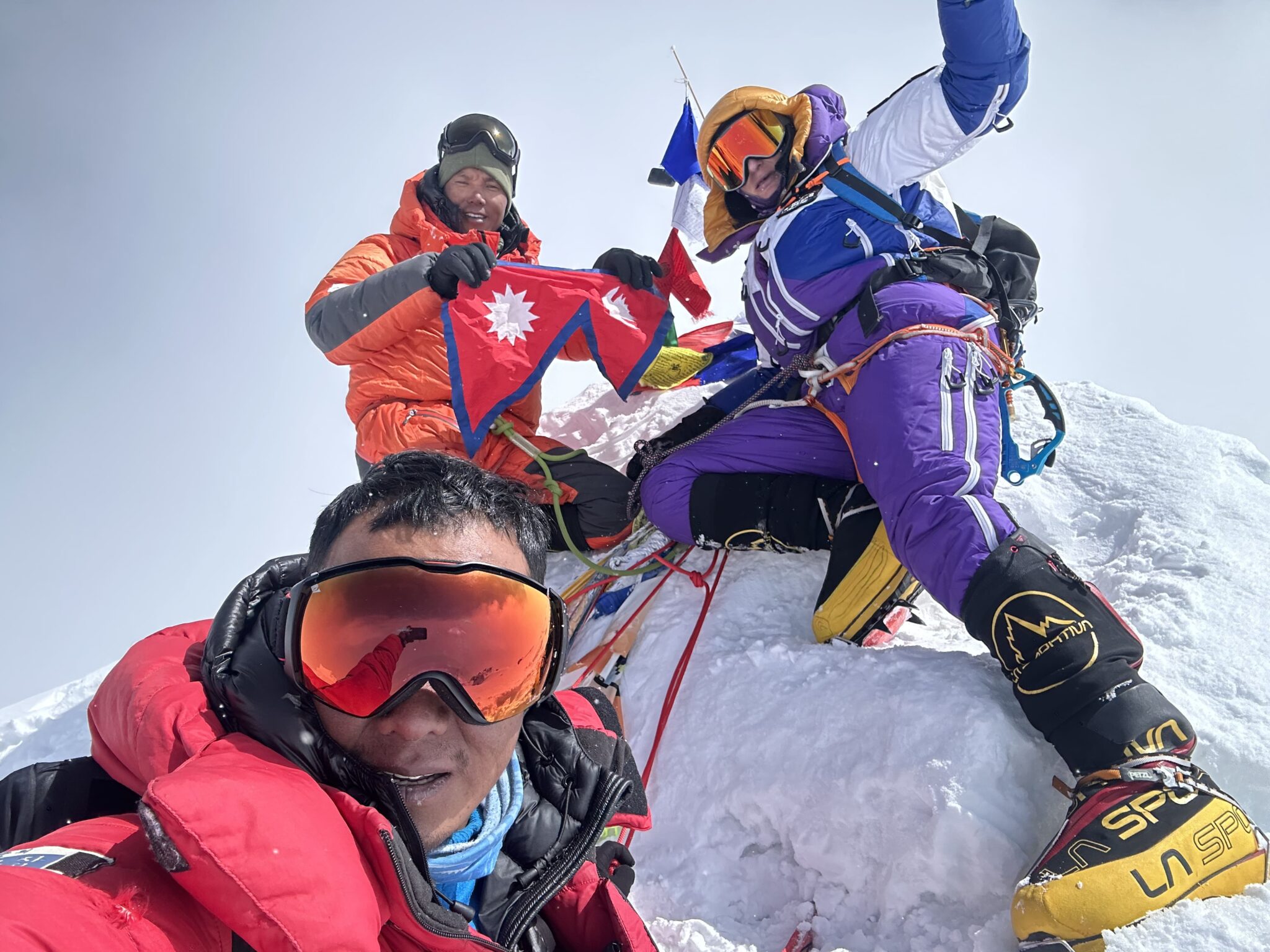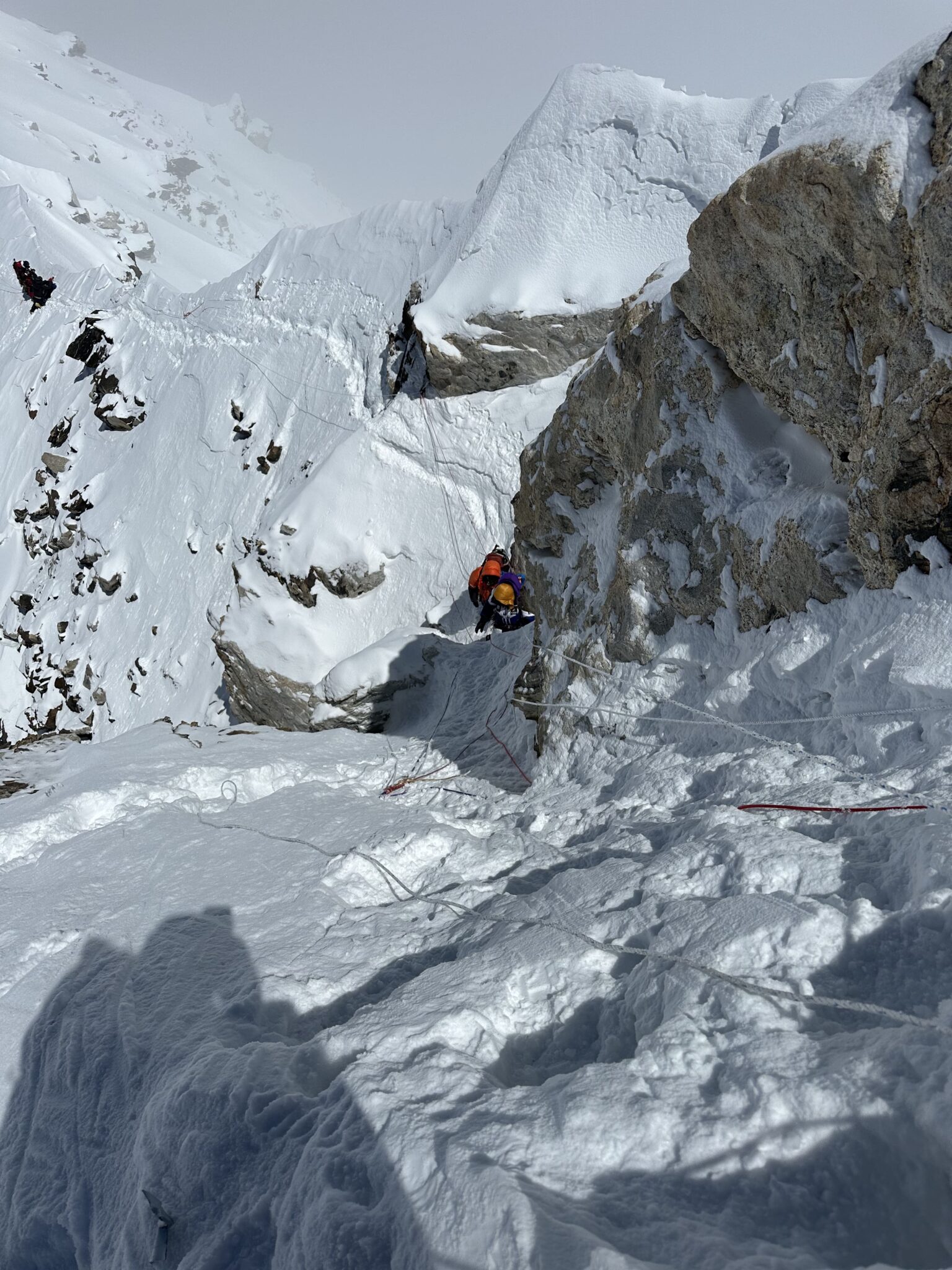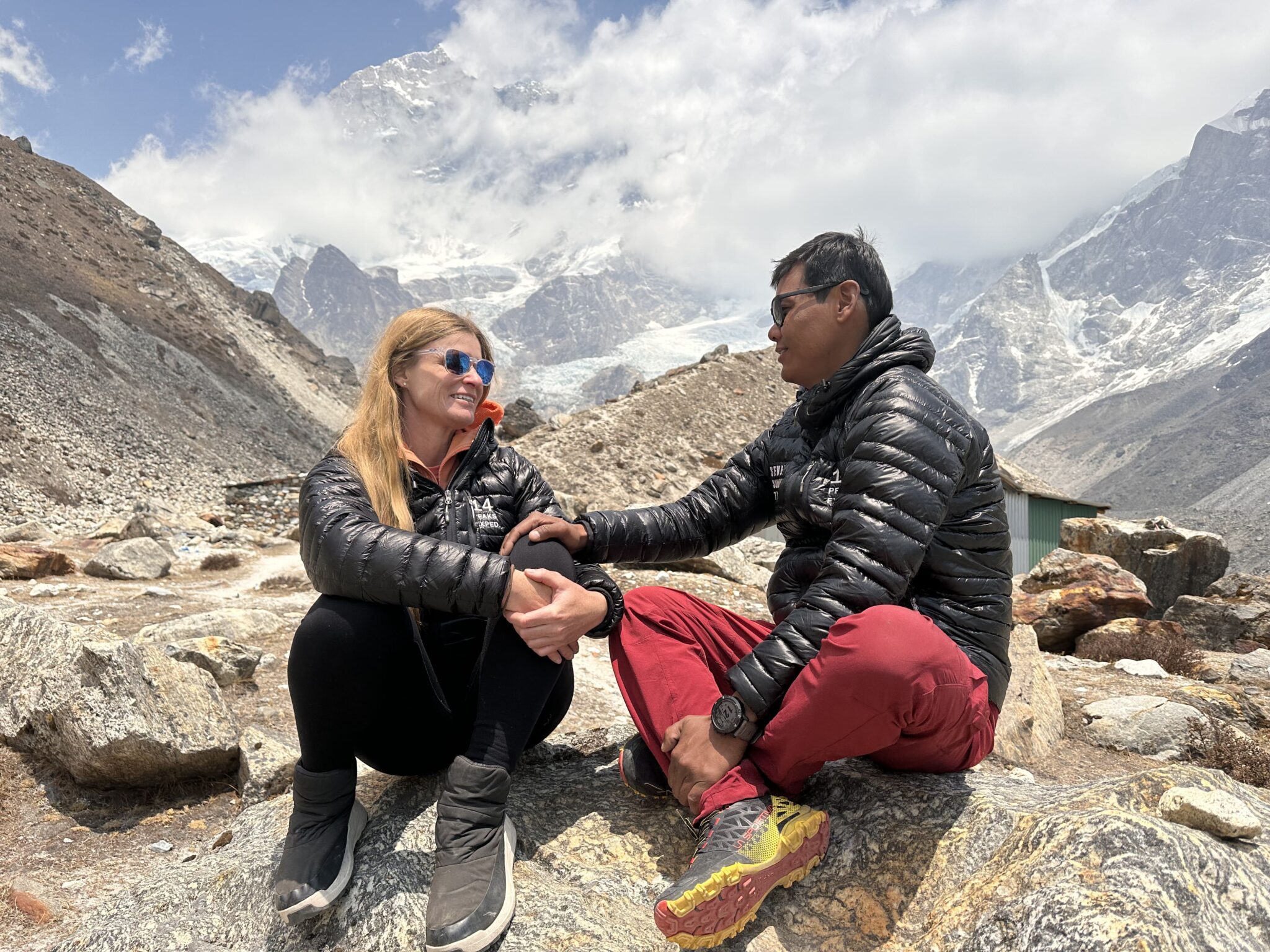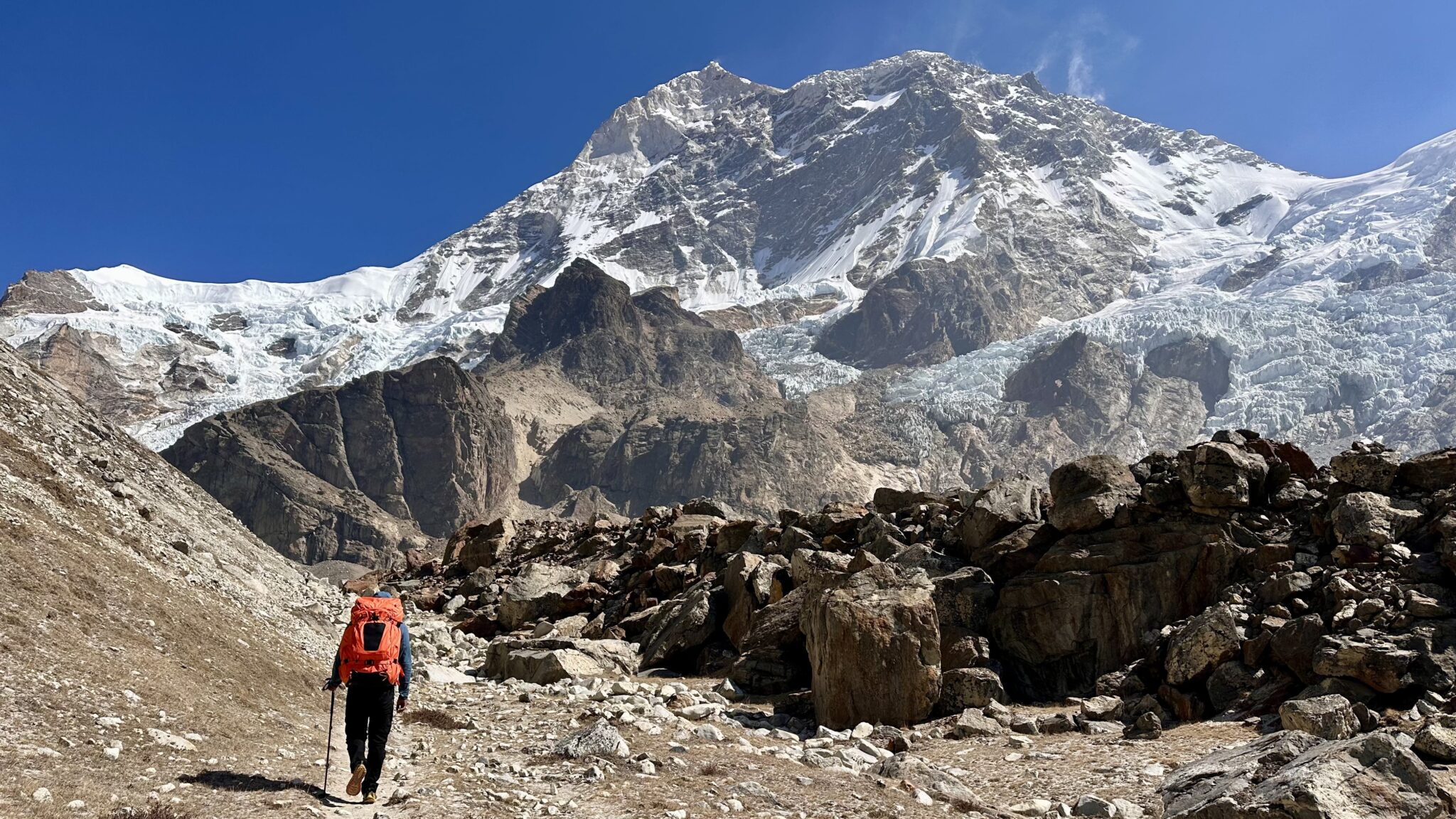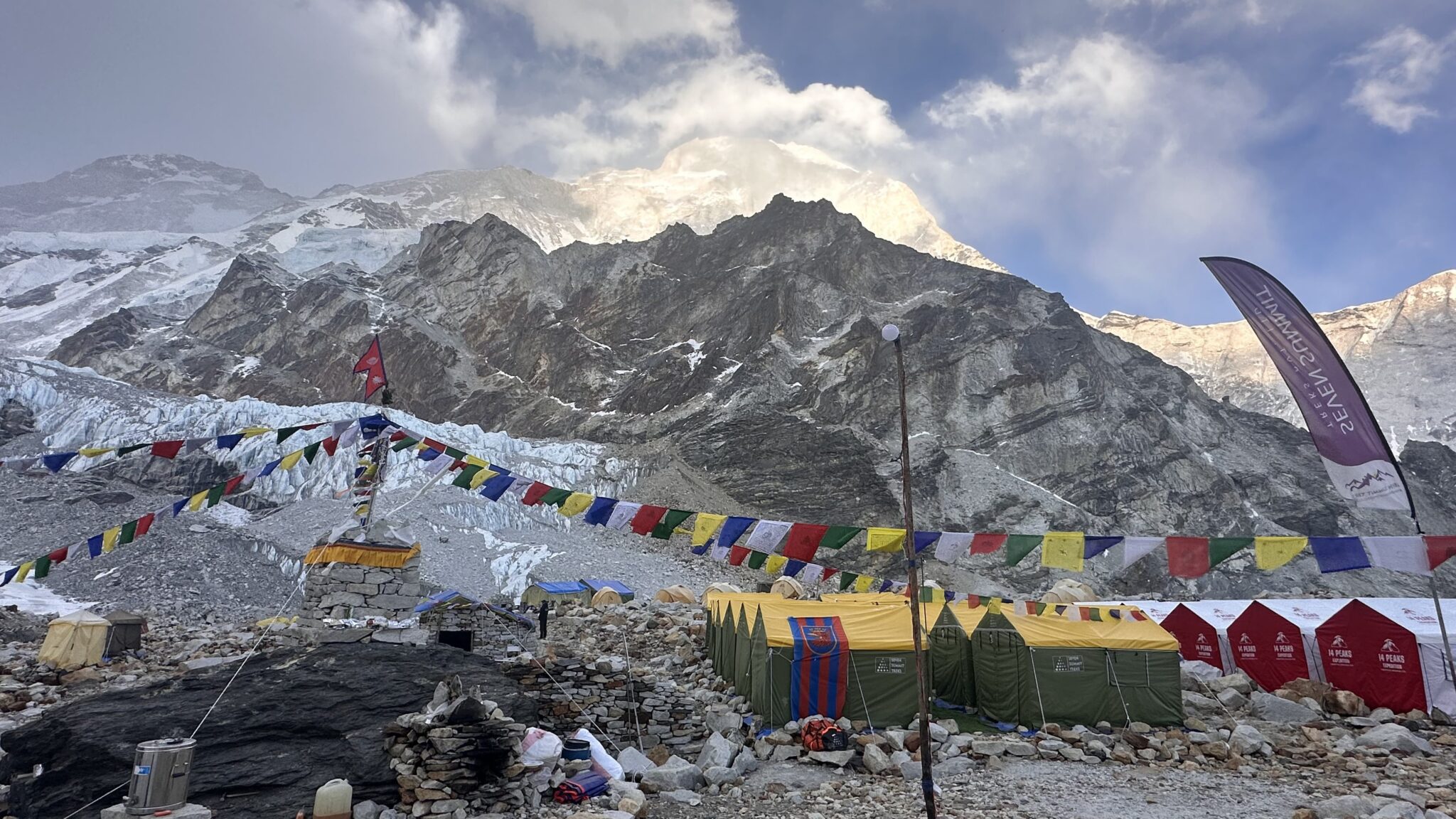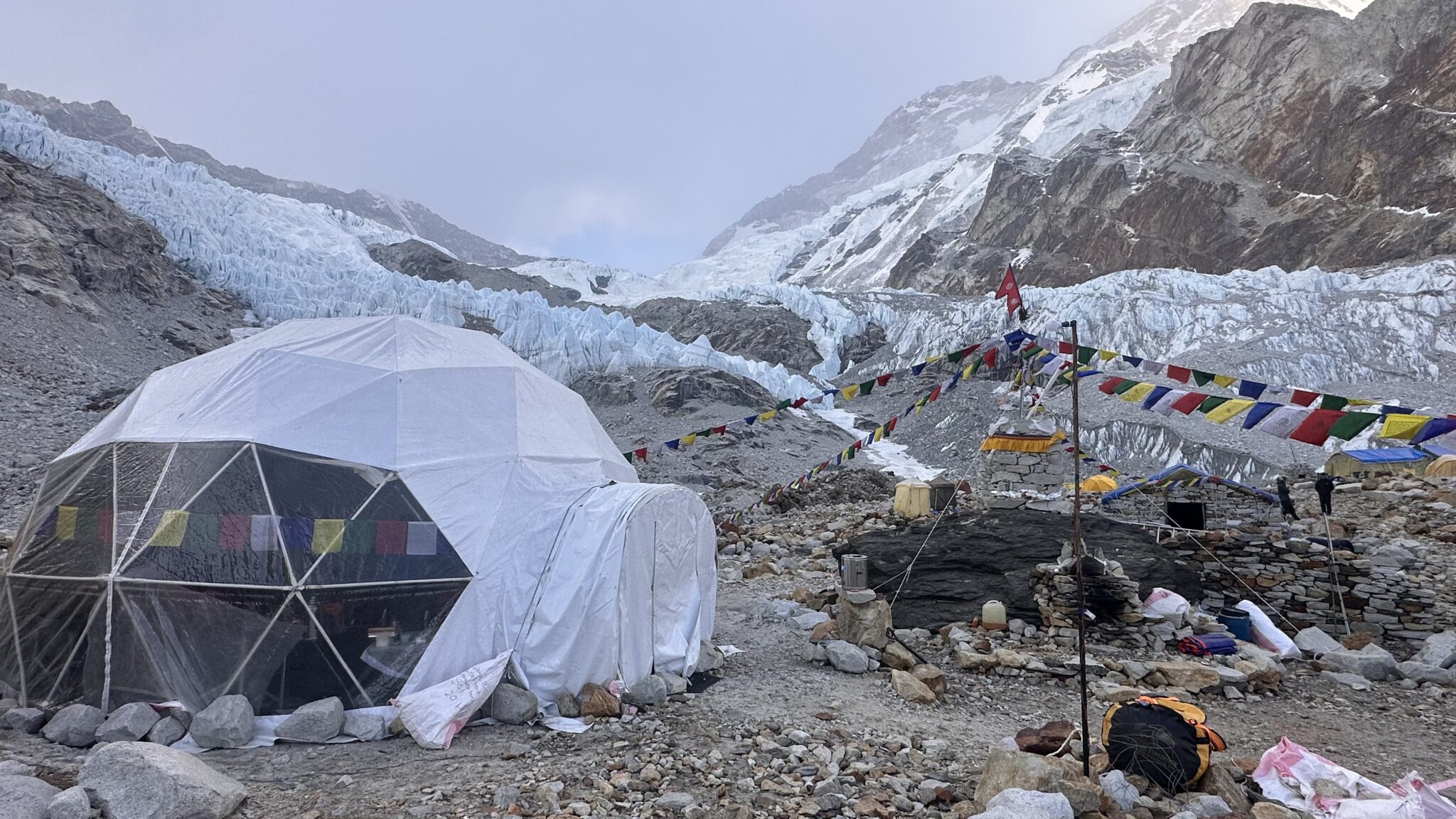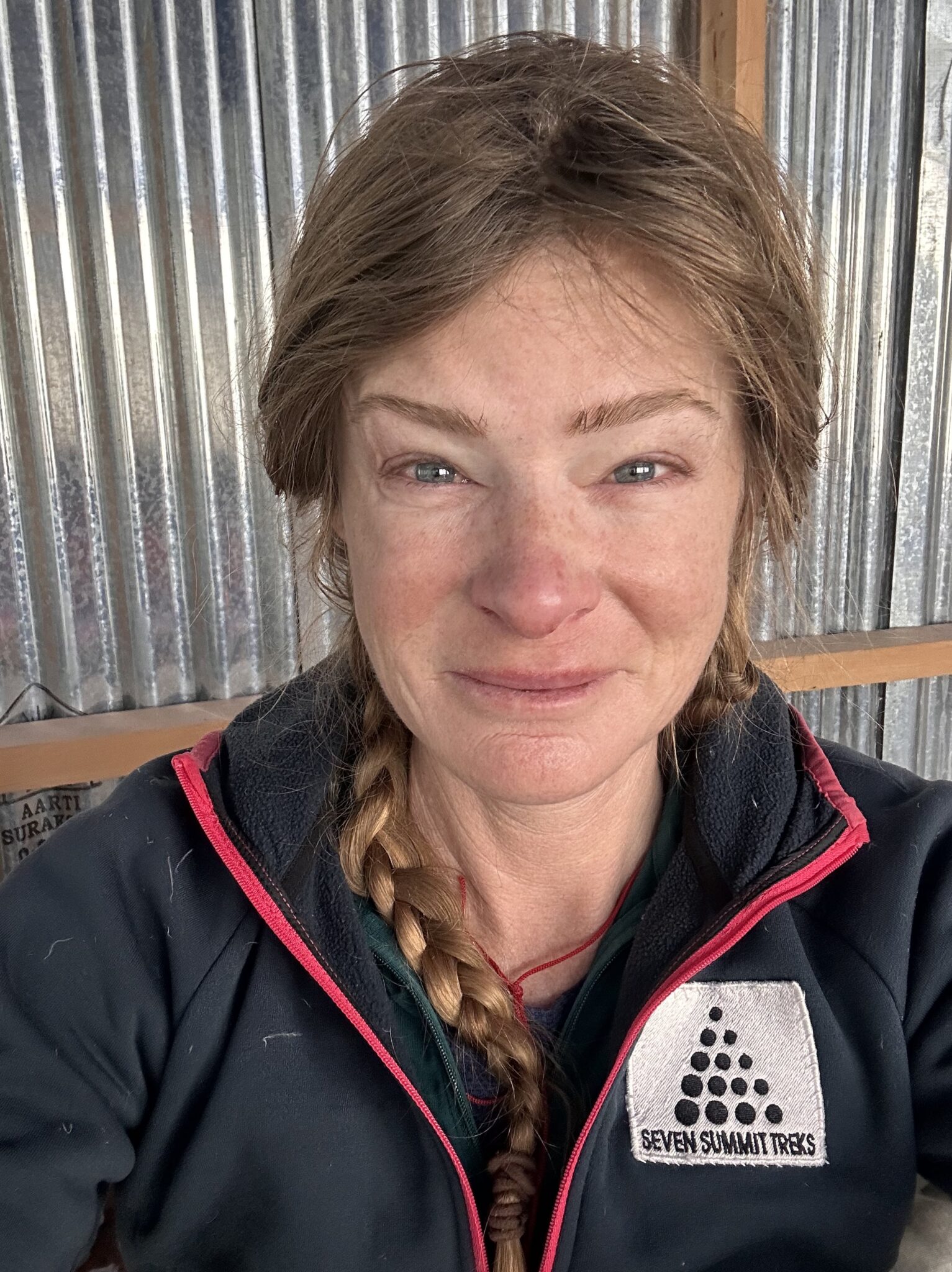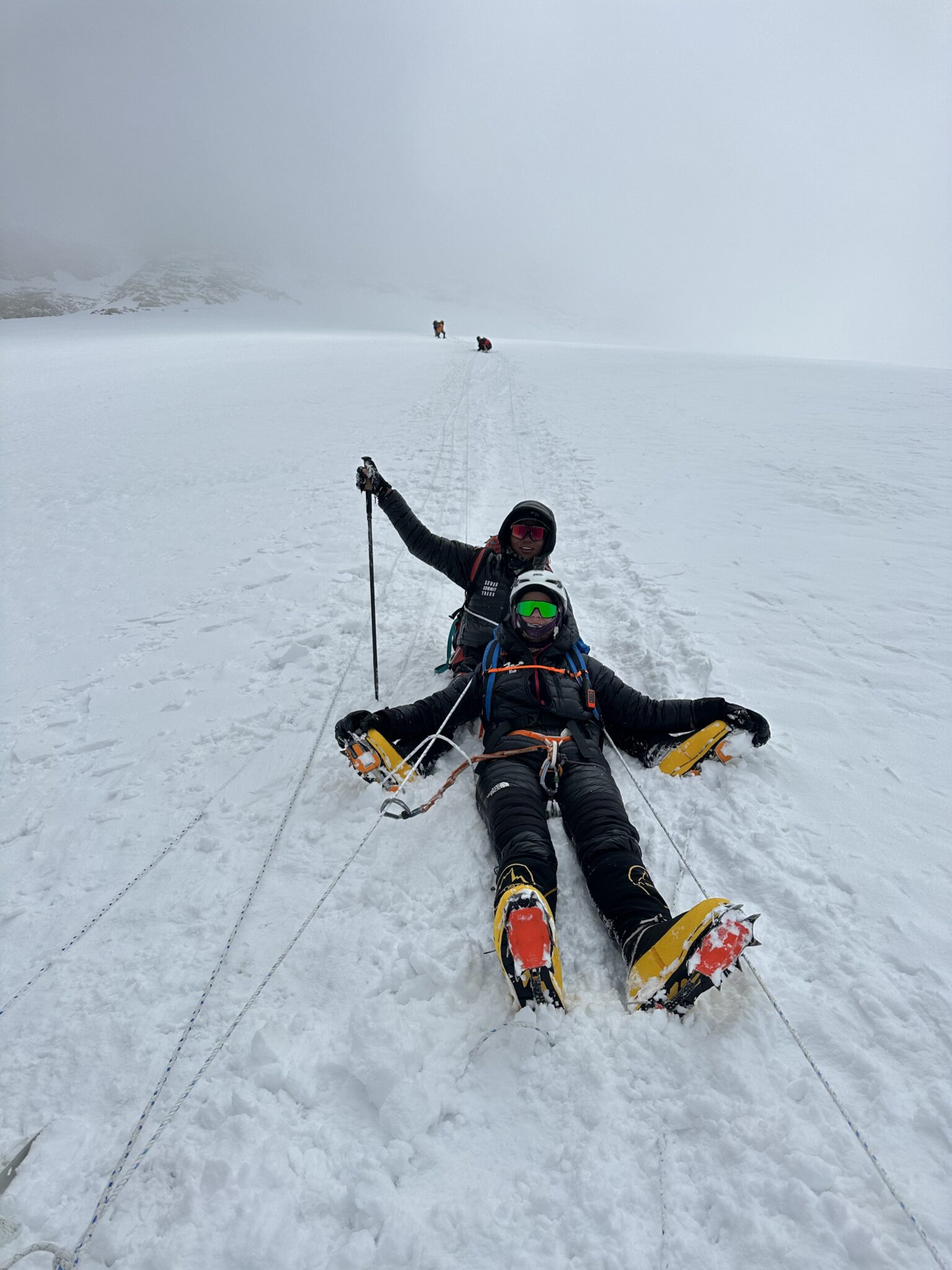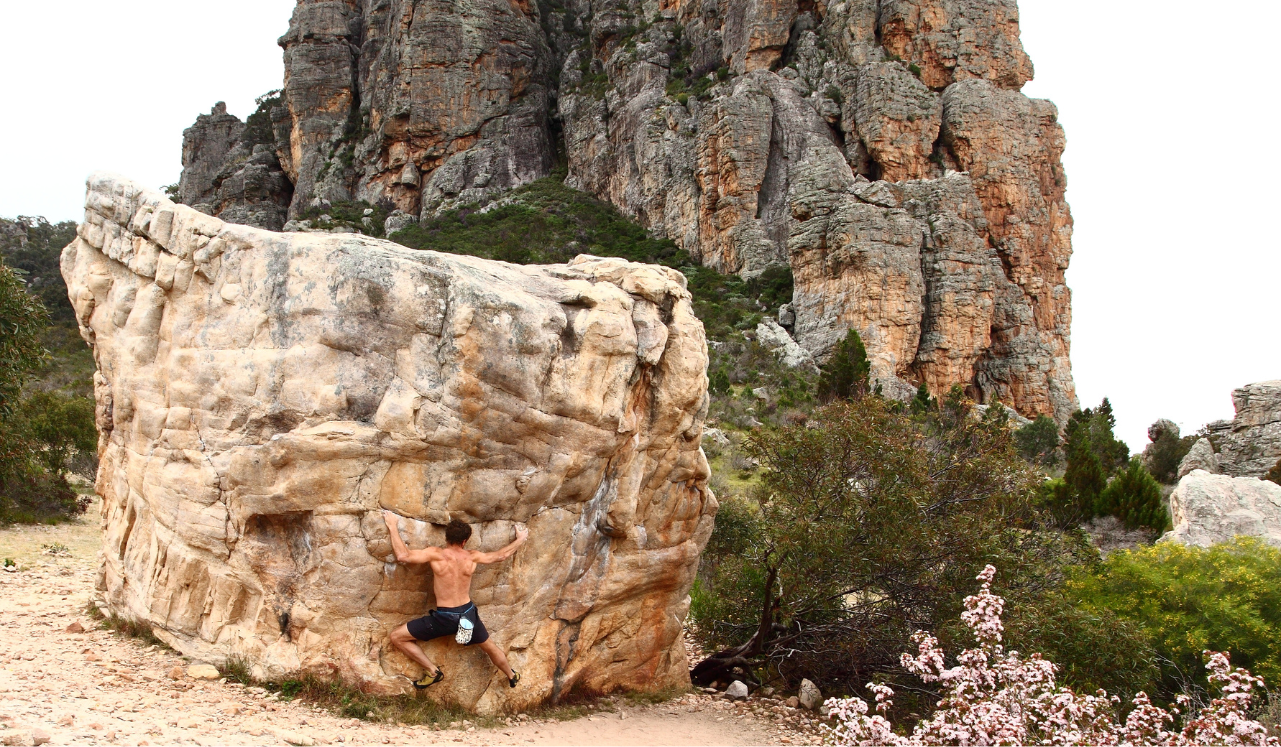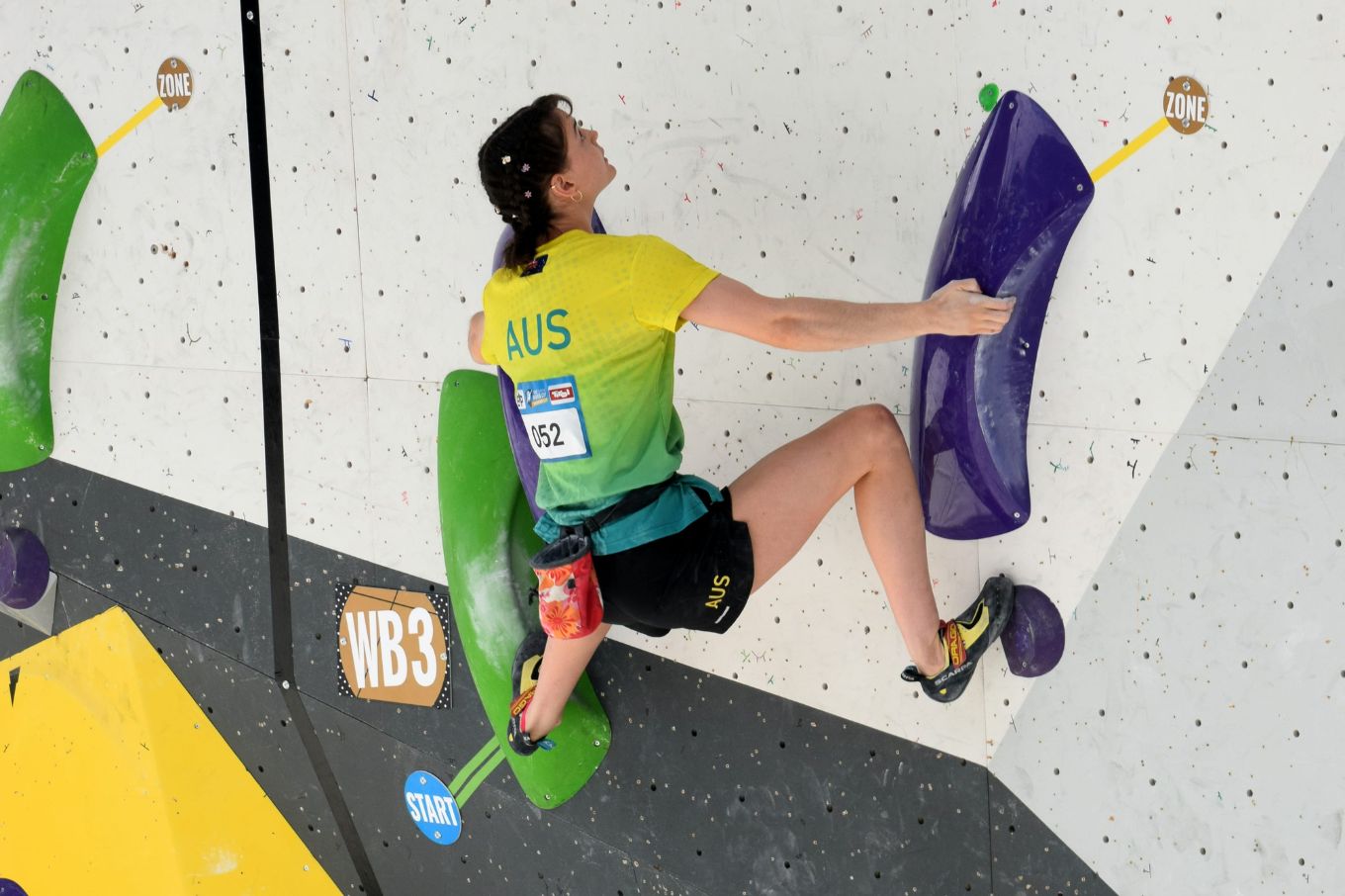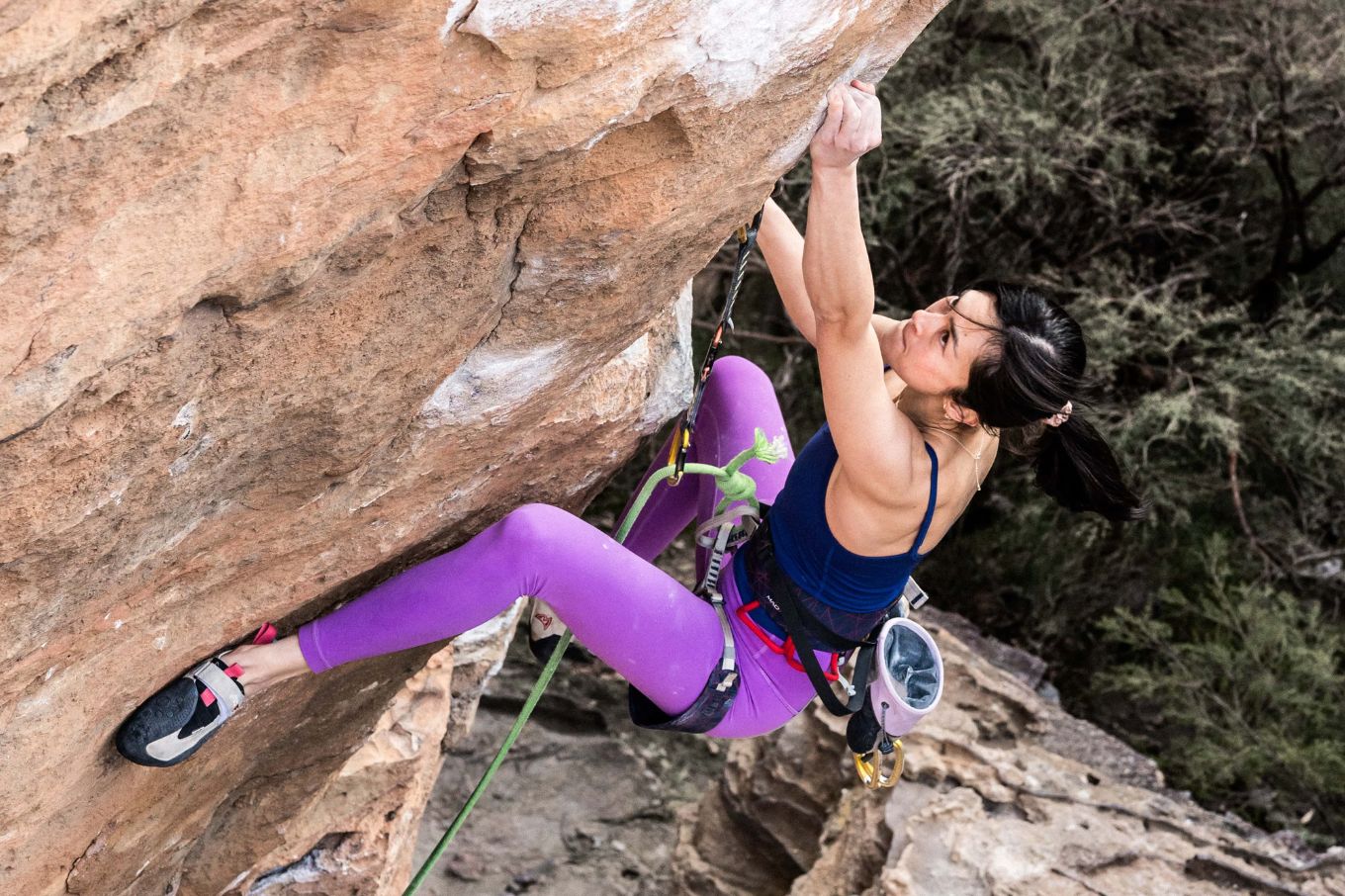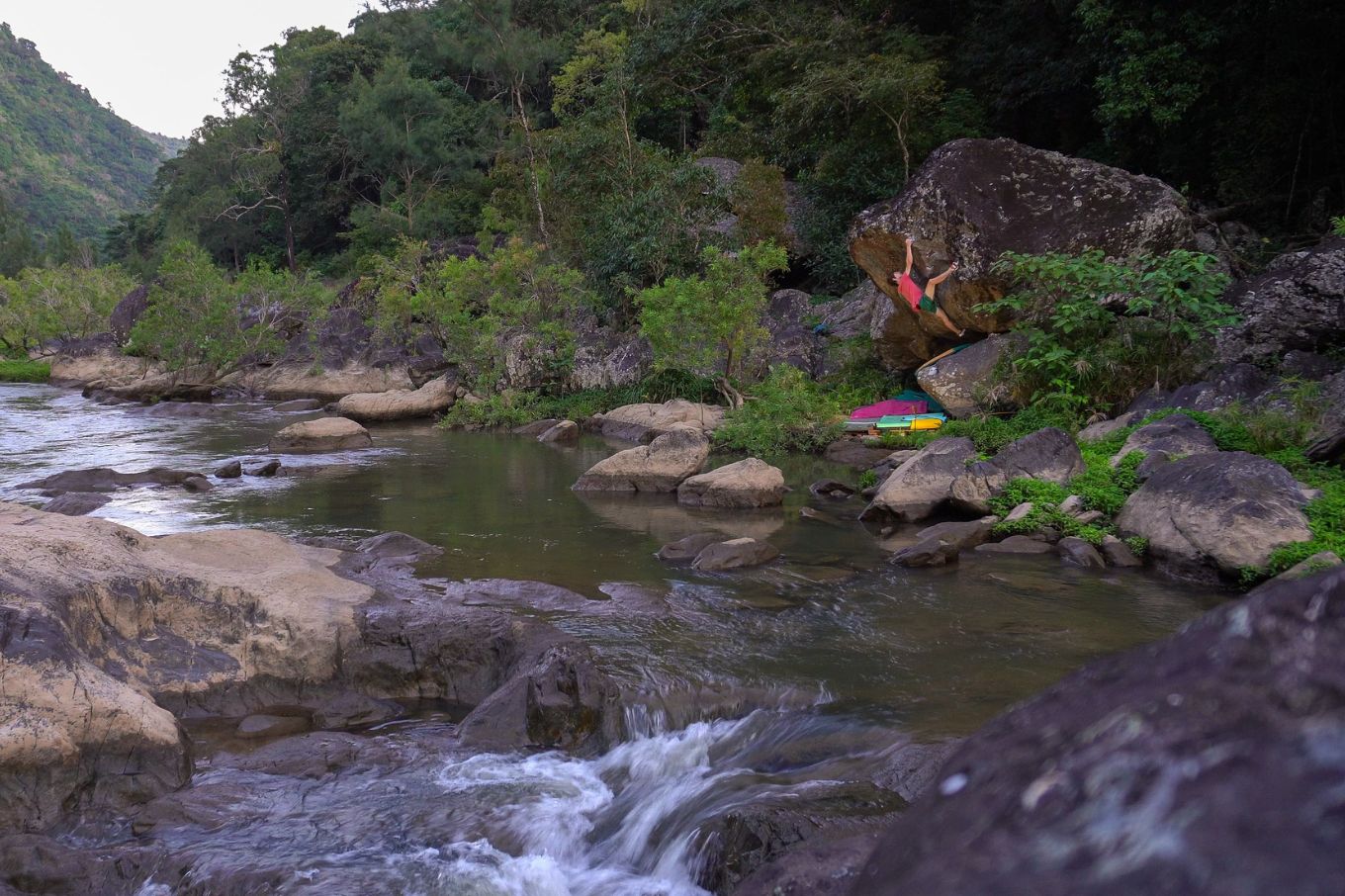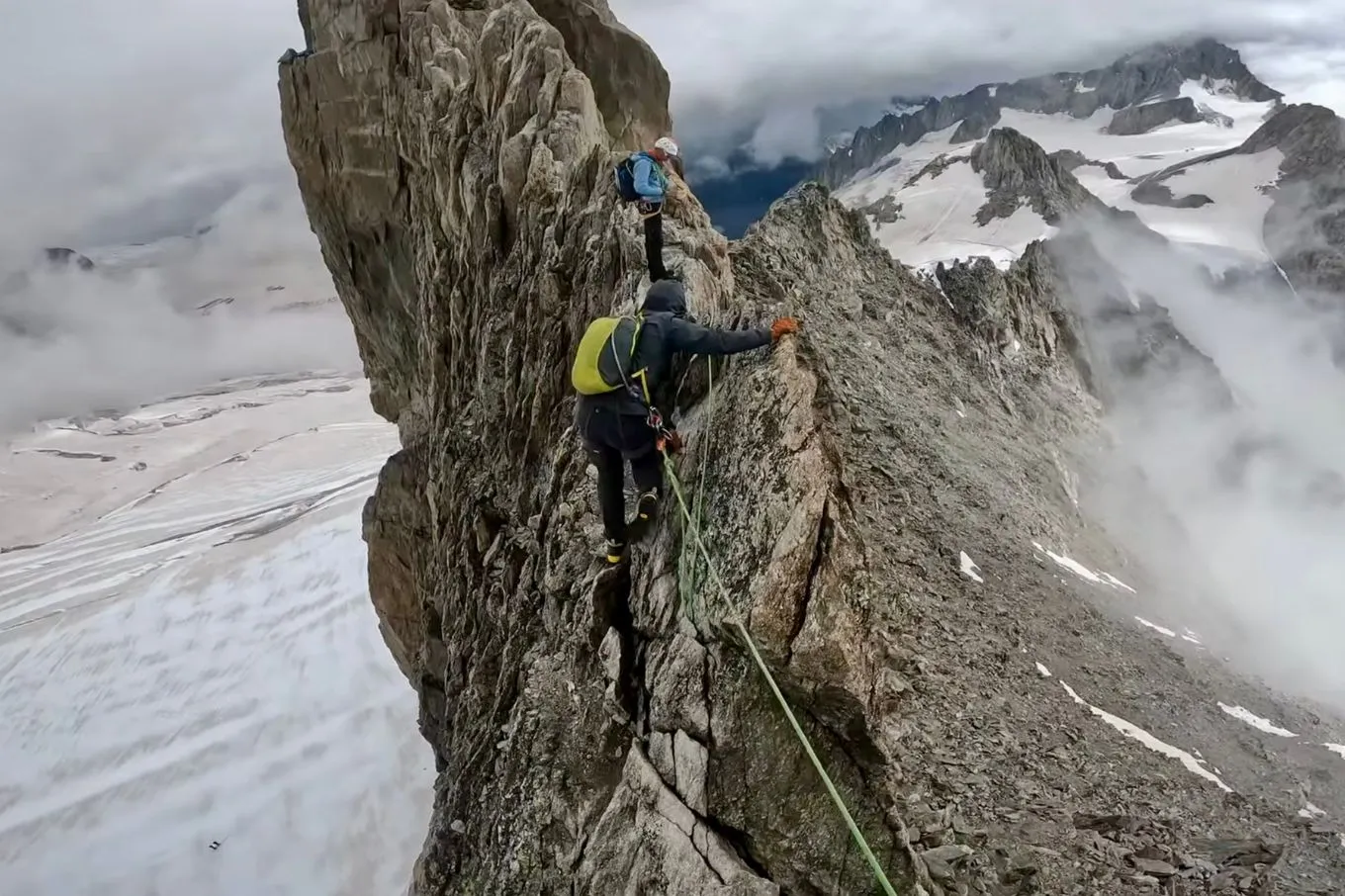The Edge of Reality: My Oxygen-Free Ascent of Makalu
(This story originally featured in Vertical Life # 50)
Last year Aussie mountaineer Alessandra summited the Himalayan mountain Makalu, which stands at 8,485 metres. In doing so, she reached an altitude that no Australian woman had previously achieved without bottled oxygen—and tapped into a well of inner strength to achieve the feat. It’s all part of her current attempt to climb the world’s 14 highest peaks without supplemental oxygen in record time.
“Where are we?”
I silently asked this question almost every five minutes as I climbed towards the summit of Makalu without supplemental oxygen in May last year. It wasn’t just about our physical position on the mountain. I questioned myself, my progress, and my limits. Each step was agony. Am I closer now? How far is the summit?
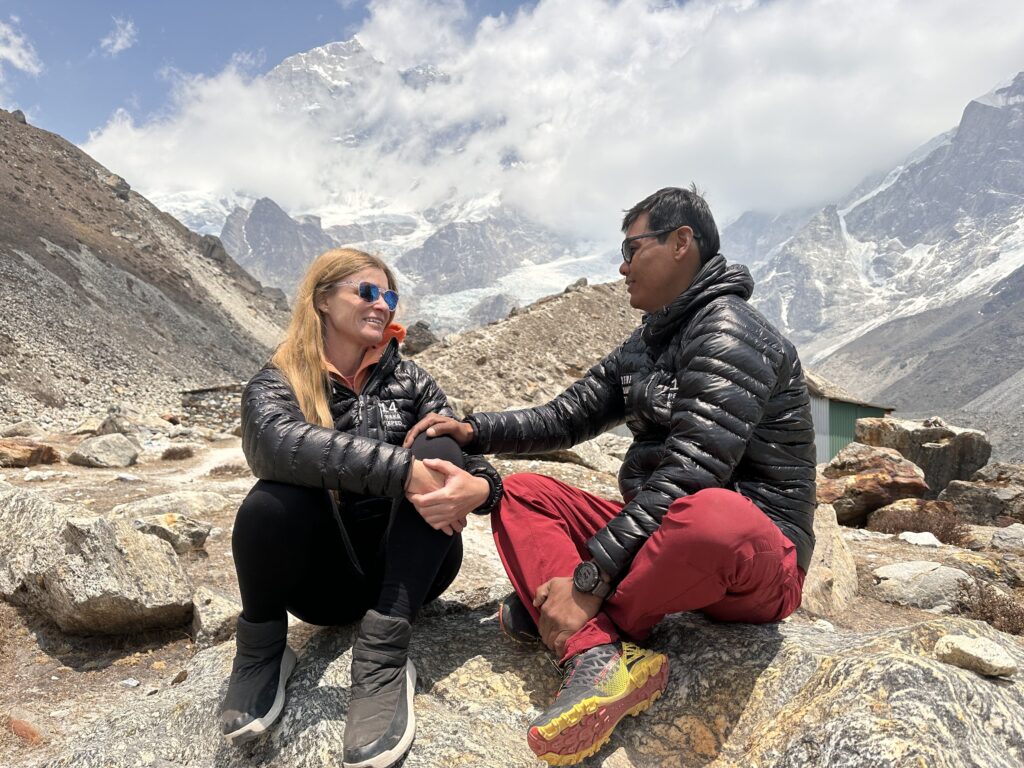
Hours passed as I moved in a dreamlike state, my thoughts an obsessive loop of time, distance, and pain. The summit seemed impossibly far, the climb never-ending. I turned to see my partner Mikel navigating a steep rocky section behind me. The world stretched out below, an infinite expanse that showed just how far we’d come. Yet, when I then looked down at my own feet, the immense difficulty of taking even a single step crushed my spirit.
Finally, we reached the summit ridge. Climbers surrounded us—some ahead, some behind but all of them hardly moving. I could see the summit in the distance. So close, yet so impossibly far.
At around 8,400 meters, I had been climbing for 18 hours. Every breath burned my lungs and drained what little energy I had left. My body operated in a mechanical rhythm like a robot: stop, breathe five times, step, repeat. Nima, Mikel’s brother, filmed my slow ascent, but I couldn’t imagine the footage being exciting—I was hardly moving. Each metre was a physical and mental battle.
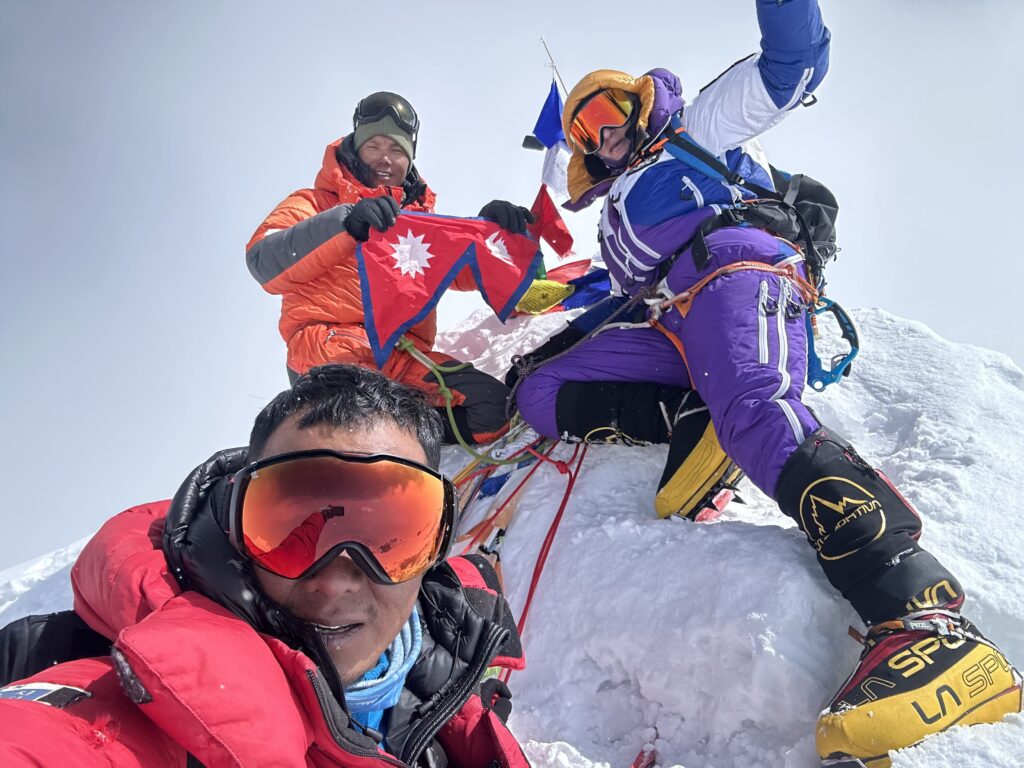
As the summit drew closer, my heart was pounding in my chest and my head throbbed with each step. I was gasping for air but could not got enough of it. I was unsure I could make it, but I continued to push forward at the speed of a sleepy turtle. Just 50 metres to the summit.
When Nima helped me onto the summit, I realised I had done it. I had climbed Makalu without oxygen—a feat achieved by only a few women in the world. I was now at a height that no Australian woman had ever been without supplemental oxygen. I had dreamed of this moment since my failed attempt in 2019. But there was no joy, no tears, no celebratory smiles. I was completely drained, on the edge of life itself. My hypoxic brain couldn’t process the reality of being at 8,485 metres.
“We’re at 4,000 metres,” I muttered.
Mikel had to correct me: “No, babe, we’re at 8,485.”
Thanks to Mikel and Nima’s efforts, we captured footage of the summit. Without it, I might not even remember being there. The exhaustion overshadowed any sense of achievement. It then hit me: we were only halfway. It was 3pm, and we still had to make it back to camp. Even though I didn’t feel a sense of accomplishment, I managed to feel fear.
Descending the ridge was a precarious journey. Steep sections required technical abseiling, and every movement demanded more focus than I had. Halfway back down to the glacier, I hit a breaking point. My body and mind were failing, and I told Mikel I needed help. One of our Sherpa friends had run out of oxygen and was struggling to survive. Mikel gave him my emergency oxygen bottle—an act of selflessness that saved a life but left us without a backup.
I reached for a dexamethasone injection to reduce my altitude-induced brain swelling. However, the cold had thickened the liquid in the vial, and the needle I initially used was too thin. Mikel, who had never administered an injection before, stepped up under my instruction. Despite a minor mishap—hitting a vein and filling the syringe with blood—the injection worked. My mind cleared just enough to focus and safely descend.
Nima pushed ahead to prepare water at camp while Mikel stayed close. I moved slowly, my legs were so heavy with exhaustion. In the night, the shadows cast by my head torch began to play tricks on me. I imagined rubbish scattered across the glacier and bent to pick it up, only to find nothing there. Later, I saw grass growing among the rocks. Rationally, I knew it was impossible, but my oxygen-deprived brain was creating illusions.
After 29 gruelling hours, I stumbled back into our tent at 7,480 metres. Nima had melted snow for water, and the first sip was like heaven on earth. I ate a small amount of food before collapsing into a deep, dreamless sleep.
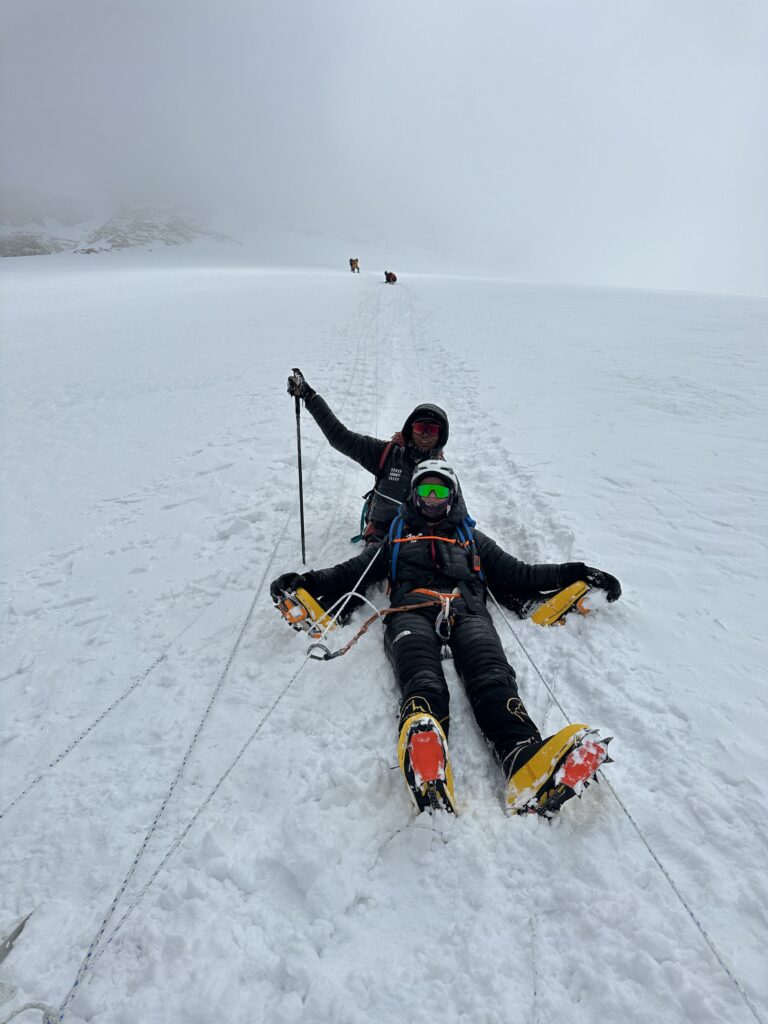
PHOTO BY NIMA SHERPA.
Climbing above 8,000 meters without oxygen pushes the human body to its limits. It strips you of everything—comfort, joy, even coherent thought. Yet, standing on top of Makalu, I felt a moment of clarity: I had given everything I had to be there. And while the descent tested me to the edge of my limits, it also affirmed the strength I never knew I had.
We don’t know what we are capable of until we test the edges of our reality.
Follow Alessandra on Instagram @alliepepperadventures and check out her live tracker to see her progress in real time

This story originally featured in Vertical Life # 50. Grab your copy here

